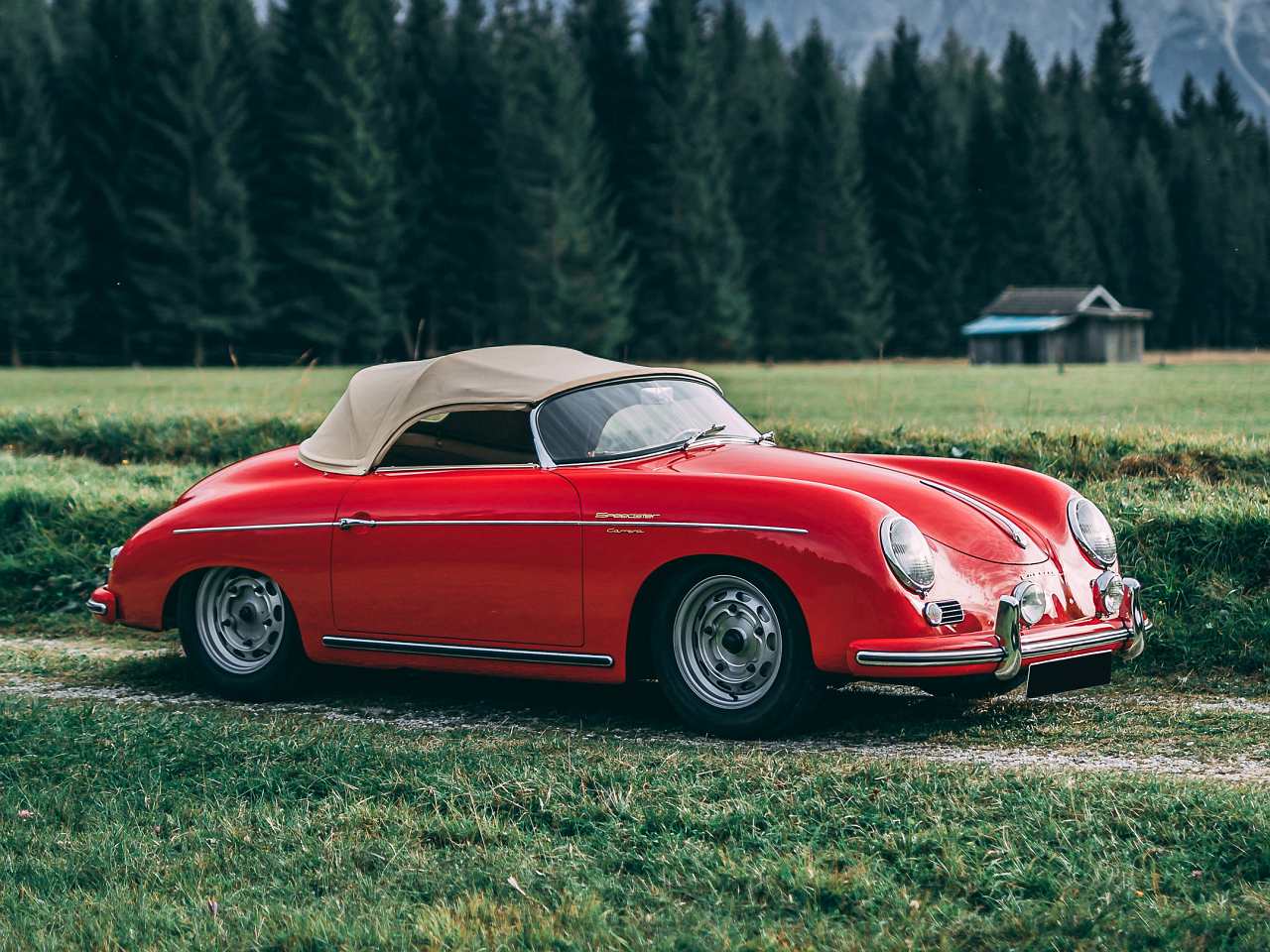1955 Porsche 356/1500 Carrera (4-Cam) – Ultimate Guide
Beginning in 1954, a new version of the Pre A 356 was introduced that is now known as the Porsche 356 Pre-A Carrera, with a powerful engine that was available in coupe, cabriolet, and Speedster variants. Highly desirable today, the Carrera name denotes the race inspired 1500 cc four cam motor that produced an astounding 110 hp. Approximately 97 of these motors were produced sometime between 1954 and early 1955. The Carrera versions would continue in the next generation 356 as the Porsche 356 A Carrera.
Porsche’s magnificent and complex Carrera “Four-cam” engine was laid out in the early 1950s, penned by Dr. Ernst Führmann to power the little 550 Spyder, the company’s first thorough-bred race car. This brilliant engineer would later joke that he called it the “Drawer motor” because he had to slip his design paperwork into his drafting desk drawer whenever Dr. Ferdinand Porsche entered his office – the project had not yet been approved!
After the 550’s class wins in the Carrera Panamerica Mexican road races, Porsche decided to make this potent little engine available in its production coupes and open-topped Speedsters and Cabriolets. These special and very expensive automobiles would carry the name “Carrera” in recognition of those racing successes, and they are both extremely rare and much sought-after today.
After a 356 coupe fitted with a Fuhrmann engine won the grueling Líege-Rome-Líege Rally in 1954, Porsche installed a Type 547 four-cam into a Speedster for testing, and similar engines were fitted to a pair of 356 coupes. Low-volume production – just a hundred units – began soon afterward.
The quad-overhead cams were driven by a combination of quill-shafts – one them hollow and containing a round piece of birch hardwood, and spiral bevel gears. The built-up Hirth-patent crankshaft and one-piece connecting rods ran in roller bearings. Lubrication was by dry-sump and there was dual ignition, the distributors initially being driven from the ends of the intake cams. The 1.5-litre Type 547 developed a lusty 100 bhp at 6200 rpm, and the engine thrived at high rotational speeds. In such a lightweight chassis, performance was thrilling: .












And of course you know carrera refers to lightweight body. Not engine.
There were 32 speedster carrera GT produced in1959
25 had 547 Fehrman engine 4 cam
7 had 1600 pushrod motors
All badged as CarreraGT
Thank you for your web site
0